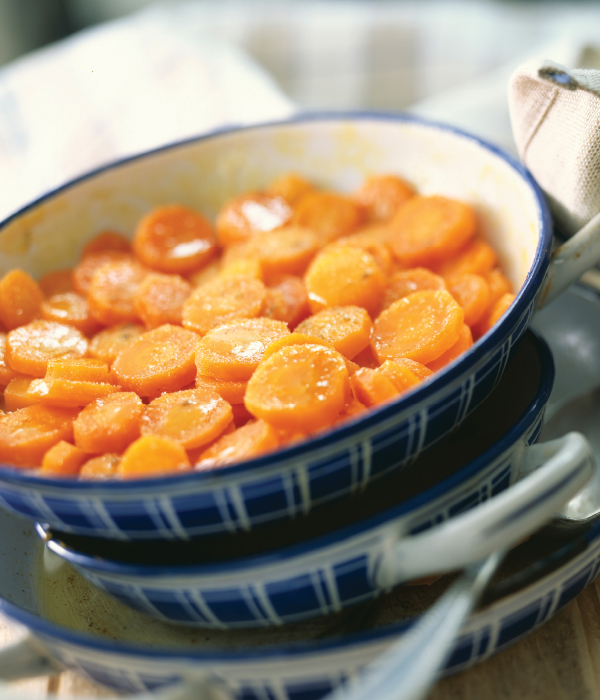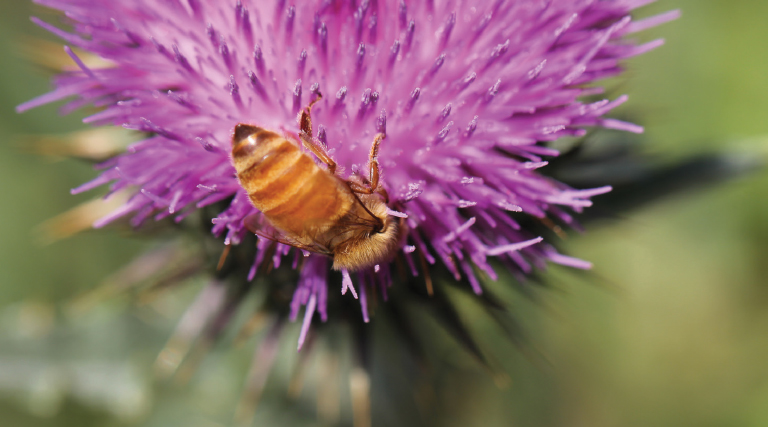The buzz on beekeeping and cooking with honey
By Claire McArthur
When Bevan Weed moved into his home in Riverton, he planted an apple tree in the backyard, but for six frustrating years, he got no fruit. After doing some research, the reason became clear: There were no bees pollinating his tree.
“So, I decided to get bees,” recalls Weed. “I started out with one hive, and it was a complete disaster. They all died.”
But that was 13 years ago, and today Weed has nearly 200 hives located on his brother Matt’s farm in Logan and on plots in Riverton, Draper and South Jordan where his bees help pollinate farmers’ crops.
In a peak year when there’s ample rain and flowers to pollinate, Weed Family Honey produces roughly 5,000 pounds of the sweet nectar, which they sell online, at farmers’ markets and in select stores.
“Early on in the season, bees get after dandelions, for example, but then a lot of other wildflowers as they begin to bloom,” explains Weed. “You could have mint or sage. A lot of people put bees on clover and alfalfa because those are good nectar sources.”
During the winter months, Weed sends his bees out to California to pollinate almond trees, which is a source of income for the beekeeper, as well as a boost to the hives’ health thanks to the temperate climate.
Nicknamed the Beehive State, Utah has a storied love affair with the noble honeybee, starting with the original name that Brigham Young’s intended for Utah: Deseret, which, in the Book of Mormon, meant “honeybee.” Even though honeybees seem like they came with the territory, they were actually brought to Utah with Mormon pioneers in the mid-1800s. That they’re not a native species did not stop the Legislature from naming them the Utah State Insect in 1983.
Let’s face it: Pioneers needed sweeteners and cane sugar, which had to be shipped in by rail. It was expensive and hard to come by. Despite efforts by Brigham Young and partners to build a factory to refine sugar from sugar beets, the venture failed. That meant the pioneers had to assuage their sweet tooth with molasses, fruit and honey. Thus, it became second nature for Utahns to keep a few hives of bees to trade honey with their neighbors.
The connection Weed’s work has to Utah’s pioneer heritage is not lost on the beekeeper. “I think that the early settlers latched onto this idea of being industrious. Every bee inside a hive has a specific purpose. It’s amazing they all come together and do such a great job of thriving,” says Weed. “Plus, they produce this food that is delicious and we can eat.”
In the Weed household, honey finds its way into all sorts of dishes. “We use it a lot in baking when we make cookies or bread as a substitute for sugar,” says Weed. “We also use a lot as an add-on to vegetables to give it a honey glaze.”
When looking for new ways to incorporate honey into his meals, Weed turns to the National Honey Board, which develops and shares recipes like honey-lacquered bacon burrito, coconut porridge with curry honey, and quinoa-honey granola. But the NHB side dish that Weed has on repeat is the honey citrus-glazed carrots, flavored with a healthy dose of honey, chicken broth, orange juice and zest.
If these recipes have you considering setting up your own backyard colony for a honey harvest, take pause: It’s not as easy as you might think.
“Beekeeping has a steep learning curve. There are so many things you can do wrong,” says Weed.
Weed recommends doing ample research, starting small with two hives and connecting with seasoned beekeepers, such as the members at Utah Beekeepers’ Association or Wasatch Beekeepers Association.

Honey-citrus glazed carrots
Honey Citrus Glazed Carrots
Makes 4 servings
Ingredients
• 1 tablespoon butter or margarine
• 4 cups carrots, sliced
• ¼ cup honey
• ½ cup chicken broth
• ½ cup orange juice
• ½ teaspoon orange zest, minced
• 1 teaspoon salt
• ¼ teaspoon pepper
Directions
• In large skillet over medium-high heat, melt butter. Add carrots and sauté for several minutes.
• Add honey, broth, orange juice and orange zest. Reduce heat to medium-low and simmer until carrots are cooked and liquid is thick. Season with salt and pepper.
—From the National Honey Board



